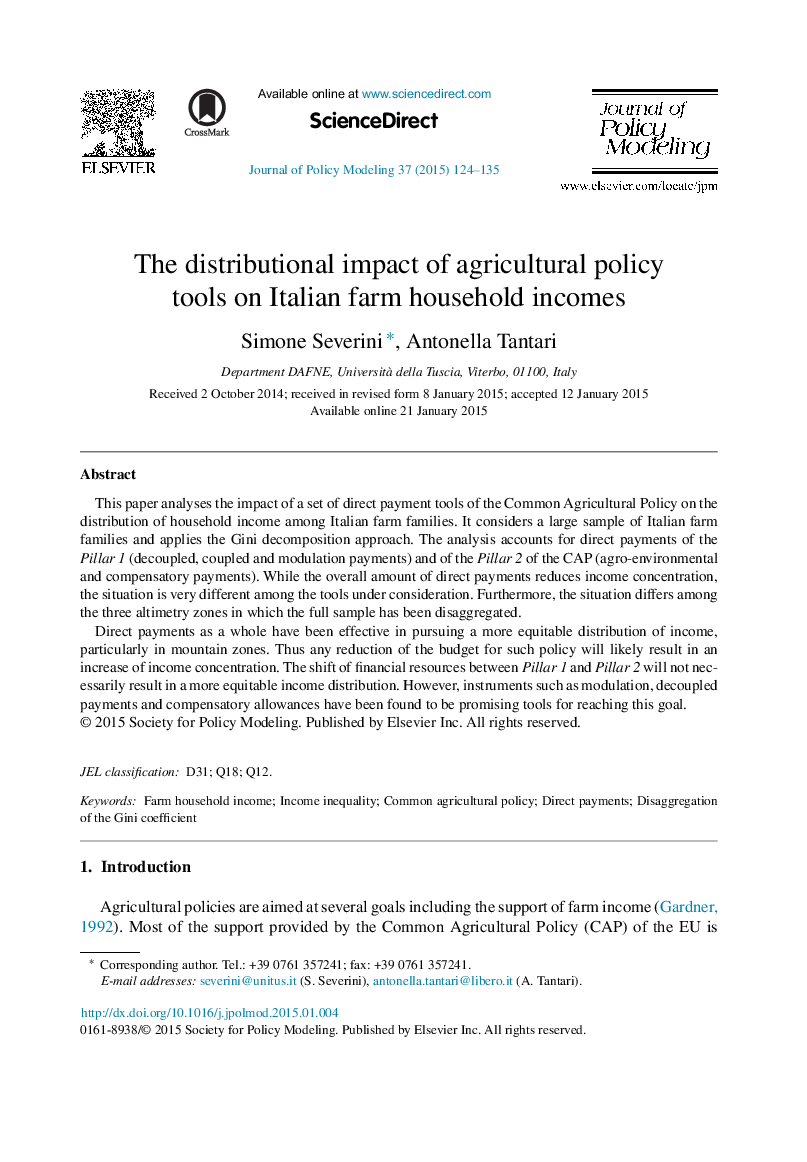| Article ID | Journal | Published Year | Pages | File Type |
|---|---|---|---|---|
| 968105 | Journal of Policy Modeling | 2015 | 12 Pages |
This paper analyses the impact of a set of direct payment tools of the Common Agricultural Policy on the distribution of household income among Italian farm families. It considers a large sample of Italian farm families and applies the Gini decomposition approach. The analysis accounts for direct payments of the Pillar 1 (decoupled, coupled and modulation payments) and of the Pillar 2 of the CAP (agro-environmental and compensatory payments). While the overall amount of direct payments reduces income concentration, the situation is very different among the tools under consideration. Furthermore, the situation differs among the three altimetry zones in which the full sample has been disaggregated.Direct payments as a whole have been effective in pursuing a more equitable distribution of income, particularly in mountain zones. Thus any reduction of the budget for such policy will likely result in an increase of income concentration. The shift of financial resources between Pillar 1 and Pillar 2 will not necessarily result in a more equitable income distribution. However, instruments such as modulation, decoupled payments and compensatory allowances have been found to be promising tools for reaching this goal.
